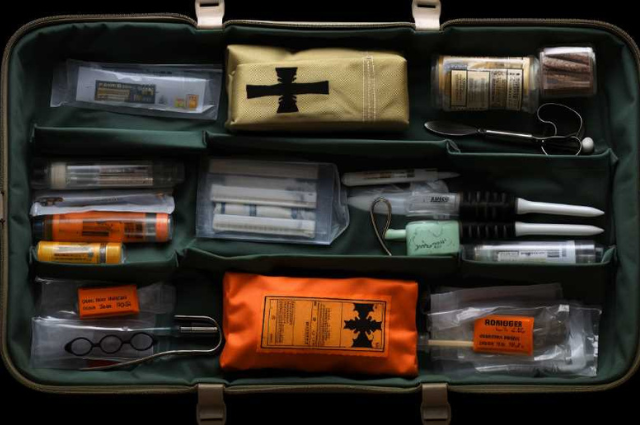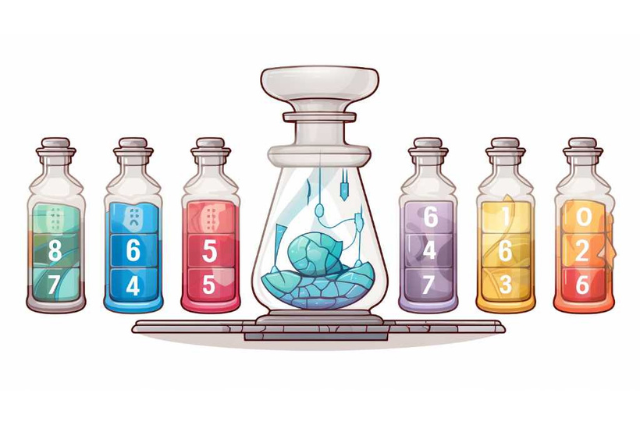Comparing Corticosteroids and Anabolic Steroids: A Deep Dive
In the realm of medicine, the utilization of steroids often sparks significant debate, particularly when discussing corticosteroids and anabolic steroids.
This comprehensive analysis aims to delve into the distinct characteristics of these two types of steroids, their applications, and potential risks.
We will examine the underlying science of corticosteroids and their common uses, while also exploring the world of anabolic steroids, both in terms of their practical applications and potential side effects.
Ultimately, we will present a direct comparison between corticosteroids and anabolic steroids, providing an in-depth understanding of their distinct properties and roles in healthcare.
Key Takeaways
- Corticosteroids are synthesized in the adrenal cortex and are subdivided into glucocorticoids and mineralocorticoids.
- Corticosteroids are used therapeutically to regulate glucose metabolism, manage immune responses, and influence electrolyte and water balance.
- Long-term use of corticosteroids can lead to osteoporosis, hypertension, weight gain, and adverse effects on glucose metabolism.
- Anabolic steroids, on the other hand, are synthetic derivatives of testosterone used to promote muscle growth and development of male sexual characteristics. Misuse of anabolic steroids can lead to cardiovascular diseases, liver damage, reproductive disorders, and psychiatric disturbances.
Understanding Steroids: A Primer
Steroids, a class of organic compounds characterized by a specific molecular structure, serve a wide array of functions in the human body and are broadly classified into two categories: corticosteroids and anabolic steroids. These compounds share the same fundamental four-ring carbon structure but differ significantly in their biological effects and applications.
Corticosteroids, synthesized in the adrenal cortex, are further subdivided into glucocorticoids and mineralocorticoids. Glucocorticoids, such as cortisol, are involved in glucose metabolism and immune response regulation. Conversely, mineralocorticoids, like aldosterone, play a crucial role in electrolyte and water balance by influencing kidney function. Corticosteroids are often prescribed therapeutically to mediate inflammatory responses in conditions such as asthma, rheumatoid arthritis, and lupus.
On the other hand, anabolic steroids, or anabolic-androgenic steroids (AAS), mimic the effects of testosterone, promoting protein synthesis and muscle growth. They are utilized medically in cases of delayed puberty, muscle wasting diseases, and low testosterone levels. However, their potential for abuse is substantial due to their muscle-building properties, leading to their infamy in sports doping scandals.
Hence, while both corticosteroids and anabolic steroids share a similar structural backbone, their physiological roles, impacts on the body, and medical applications differ considerably. Understanding these differences is critical in both the medical field, for effective treatment and patient management, and in the realm of sports and fitness, for ethical and health considerations. It is essential to acknowledge the complexity and diversity within the steroid family to avoid misconceptions and misuse.
The Science Behind Corticosteroids
Delving deeper into the science of corticosteroids, we must explore their mechanisms of action and their diverse therapeutic applications. Corticosteroids are a class of drugs that mirror the effects of hormones your body produces naturally in your adrenal glands. They work by decreasing inflammation and reducing the activity of the immune system. They do this by binding to glucocorticoid receptors, which then modifies the transcription process of certain genes in the nucleus of cells, thereby influencing the inflammatory response at a molecular level.
The therapeutic applications of corticosteroids are vast and significant. They are used to treat conditions where the immune system is overactive, such as allergies, asthma, autoimmune diseases, and sepsis. They are also used in replacement therapy for individuals with adrenal insufficiency, and as adjunctive therapy for certain types of cancer.
However, the administration of corticosteroids is not without risk. Long-term use can lead to harmful side effects including osteoporosis, hypertension, weight gain, and susceptibility to infections. Therefore, their use must be carefully monitored, and the lowest effective dose should be administered.
Common Uses of Corticosteroids
In the realm of medical treatment, corticosteroids are widely utilized for a range of conditions due to their potent anti-inflammatory and immunosuppressive properties. They are typically prescribed to treat conditions that cause inflammation and overactive immune responses, affecting various systems in the body.
One of the most common uses of corticosteroids is in the management of autoimmune diseases, such as lupus, multiple sclerosis, and rheumatoid arthritis. By suppressing the immune response, corticosteroids can help reduce the symptoms and slow the progression of these diseases. They are also often used to treat severe allergies and asthma due to their capacity to reduce inflammation and swelling in airways.
Moreover, corticosteroids are employed in the treatment of certain skin conditions like eczema and psoriasis. They can help reduce itching, redness, and swelling associated with these conditions, providing significant relief to patients. In addition, corticosteroids have a crucial role in managing acute conditions, such as allergic reactions or severe asthma attacks, where rapid response is critical.
In the oncology field, corticosteroids are used to ameliorate side effects of chemotherapy, such as nausea and vomiting, and to reduce inflammation caused by tumors. Furthermore, in cases of organ transplantation, corticosteroids are part of the regimen to prevent organ rejection, due to their immunosuppressive capabilities.
Potential Risks and Side Effects of Corticosteroids
Despite their numerous benefits, a considerable number of potential risks and side effects are associated with the prolonged use of corticosteroids. Corticosteroids are potent drugs with a wide spectrum of physiological effects. While their anti-inflammatory and immunosuppressive properties are invaluable in managing a host of medical conditions, long-term usage can be associated with substantial adverse effects.
One of the most common side effects is glucocorticoid-induced osteoporosis, a condition characterized by decreased bone density and increased risk of fractures. Prolonged corticosteroid use can also lead to hyperglycemia and even steroid-induced diabetes. This is due to corticosteroids' effect on glucose metabolism, as they increase insulin resistance and stimulate hepatic glucose production.
Corticosteroids can also induce psychiatric disturbances, including mood swings, memory issues, and even severe depression or psychosis in extreme cases. Moreover, long-term use can lead to adrenal suppression, a state where the body's own production of corticosteroids is insufficient. This can lead to a range of symptoms, including fatigue, nausea, and hypotension.
Cataract formation and glaucoma are potential ocular side effects, while skin thinning, bruising, and poor wound healing are dermatological concerns. Additionally, corticosteroids can cause weight gain and redistribution of body fat, leading to a characteristic 'moon face' and 'buffalo hump'.
An In-Depth Look at Anabolic Steroids
Transitioning from the world of corticosteroids into the realm of anabolic steroids, it is crucial to understand these are fundamentally different drugs, each with unique properties, applications, and potential side effects. Anabolic steroids, technically known as anabolic-androgenic steroids (AAS), are synthetic derivatives of testosterone, a naturally occurring male hormone. They promote the growth of skeletal muscle (anabolic effects) and the development of male sexual characteristics (androgenic effects).
Anabolic steroids are primarily used in the practice of medicine to treat conditions where the body does not produce enough testosterone, such as delayed puberty, some types of impotence, and body-wasting in patients with AIDS and other diseases that result in loss of lean muscle mass. Athletes and others often misuse anabolic steroids to enhance physical performance and body appearance.
Anabolic steroids are administered via three routes - oral, injectable, and transdermal. Each route has its unique pharmacokinetic properties. Oral administration, while convenient, suffers from extensive first-pass metabolism in the liver, leading to a high risk of hepatotoxicity. Conversely, injectable steroids bypass the liver, reducing this risk.
The potential side effects of anabolic steroids are significant and include cardiovascular diseases, liver damage, reproductive disorders, psychiatric disturbances, and even malignancies. Despite these risks, the illegal use of anabolic steroids remains a societal issue, driven by the desire for aesthetic enhancement and improved athletic performance. Education about the dangers associated with anabolic steroid use is crucial in mitigating these risks.
Practical Applications of Anabolic Steroids
Practical applications of anabolic steroids extend beyond the realm of sports and bodybuilding, encompassing various medical treatments where these substances prove beneficial.
In the medical field, anabolic steroids are often used in hormone therapy for individuals who have a low testosterone level. These synthetic substances can help restore hormonal balance, thereby improving the individual's overall health and well-being.
Furthermore, anabolic steroids are used in the treatment of certain types of anemia, a condition characterized by a lack of red blood cells. Steroids stimulate the production of erythropoietin, a hormone that controls the production of red blood cells in the bone marrow, therefore aiding in the correction of anemia and improving the patient's energy levels and quality of life.
In cases of severe muscle wasting due to diseases such as HIV/AIDS, anabolic steroids are employed to promote muscle growth and weight gain, enhancing the patient's physical strength and overall health status. This application underscores the potential therapeutic benefits of these substances when used appropriately and under medical supervision.
However, it is important to note that the use of anabolic steroids must be carefully managed due to their potential side effects, which include liver damage, cardiovascular issues, and hormonal imbalances, among others. Therefore, any application of these substances must be under the strict guidance of a healthcare professional.
Anabolic Steroids: Side Effects and Dangers
While many recognize the potential benefits of anabolic steroids, one must also consider the significant risks and side effects associated with their misuse. Anabolic steroids are synthetic substances similar to the male hormone testosterone. While these steroids have legitimate medical uses, they are frequently misused to enhance athletic performance and body image, which can result in serious health consequences.
Physically, the abuse of these drugs can lead to a myriad of problems. These include liver damage, cardiovascular complications such as heart attack and stroke, stunted growth in adolescents, and severe skin conditions. Men may experience testicular atrophy, reduced sperm count, baldness, and the development of breasts, while women may undergo changes in menstrual cycle, growth of facial hair, deepened voice, and reduction in breast size.
Psychological effects can be equally detrimental. Users often display aggressive behavior, mood swings, manic symptoms, and even hallucinations. Additionally, anabolic steroids are considered addictive, leading to a condition known as 'roid rage,' characterized by drastic changes in mood and violent aggression.
Furthermore, the misuse of anabolic steroids can lead to legal repercussions. In many jurisdictions, the non-medical use of these substances is illegal.
Direct Comparison: Corticosteroids Vs Anabolic Steroids
In comparing the two primary types of steroids, corticosteroids and anabolic steroids, it is essential to understand their distinct characteristics, benefits, and potential side effects.
Corticosteroids, commonly prescribed for their anti-inflammatory properties, work by mimicking cortisol, a hormone naturally produced in the adrenal glands. They are primarily used in the treatment of diseases such as asthma, rheumatoid arthritis, lupus, and other inflammatory disorders. Some of its side effects may include weight gain, mood swings, and increased blood pressure.
On the other hand, anabolic steroids are synthetic variants of testosterone, the male sex hormone. They are typically used to enhance muscle growth and improve physical performance. Athletes and bodybuilders might use them illegally to gain a competitive edge. However, misuse of anabolic steroids can lead to severe health complications like liver damage, heart disease, and psychological disorders.
The benefits and side effects of these two types of steroids are significantly different due to their diverse functions and potential for misuse. Corticosteroids are generally used under medical supervision and have a lower risk of misuse compared to anabolic steroids. However, long-term use of corticosteroids can lead to serious health issues, such as osteoporosis.
On the flip side, anabolic steroids have a higher potential for misuse, particularly among athletes and bodybuilders. Their side effects can be severe and potentially life-threatening, particularly when used without medical supervision.
In a nutshell, both types of steroids have their place in medicine, but they must be used responsibly and under appropriate medical supervision to mitigate their potential adverse effects.
Frequently Asked Questions
What Is the History and Origin of Steroids, Both Corticosteroids and Anabolic Steroids?
Steroids, both corticosteroids and anabolic steroids, have a rich history and origin.
Corticosteroids were first identified in the 1940s and have since been used for their anti-inflammatory properties.
Anabolic steroids, on the other hand, were discovered in the 1930s and are primarily used to stimulate muscle growth.
These substances have significantly impacted the medical field, as well as sports and bodybuilding industries.
Are There Any Legal Repercussions or Restrictions Regarding the Use of Corticosteroids and Anabolic Steroids?
Yes, there are legal repercussions and restrictions involving the use of corticosteroids and anabolic steroids.
In many countries, anabolic steroids are classified as controlled substances and their non-medical use is often illegal.
Corticosteroids, while legal, are typically available only with a prescription.
Misuse of either type of steroid can lead to legal penalties, including fines and imprisonment, as well as potential health risks.
Can Athletes and Bodybuilders Use These Steroids Without Violating Doping Regulations?
The use of corticosteroids and anabolic steroids by athletes and bodybuilders is strictly regulated under doping regulations. Steroid use can provide unfair competitive advantages and pose significant health risks.
Therefore, using these substances without a legitimate medical reason and without an exemption is typically considered a violation of these regulations. Athletes found guilty of such violations could face penalties, including disqualification and suspension from competition.
Are There Any Natural Alternatives or Supplements to Corticosteroids and Anabolic Steroids?
Yes, there are natural alternatives to corticosteroids and anabolic steroids.
For inflammation reduction, alternatives include Omega-3 fatty acids, turmeric, and ginger.
Natural anabolic substances include proteins, creatine, and branched-chain amino acids (BCAAs). These can promote muscle growth and repair.
However, it's important to note that while these alternatives can provide similar benefits, they may not necessarily match the potency of steroids.
Always consult a healthcare professional before starting any supplement regimen.
Can the Use of Corticosteroids and Anabolic Steroids Lead to Addiction and Dependence?
Yes, the use of corticosteroids and anabolic steroids can lead to addiction and dependence.
Anabolic steroids, in particular, have been associated with psychological dependence. Users may develop a craving, continue use despite negative health effects, or suffer withdrawal symptoms if they stop.
Corticosteroids, while not typically associated with psychological addiction, can cause physical dependence and withdrawal symptoms if abruptly discontinued after prolonged use.
Always consult a healthcare provider before starting or stopping these medications.
Conclusion
In conclusion, corticosteroids and anabolic steroids, despite sharing a similar nomenclature, have vastly different applications and side effects.
Corticosteroids, primarily used for their anti-inflammatory properties, have potential risks such as weakened immunity and bone loss.
Anabolic steroids, used for muscle growth and physical performance enhancement, carry risks like cardiovascular disease and mood disorders.
The usage of these steroids should be carefully monitored under medical supervision.







